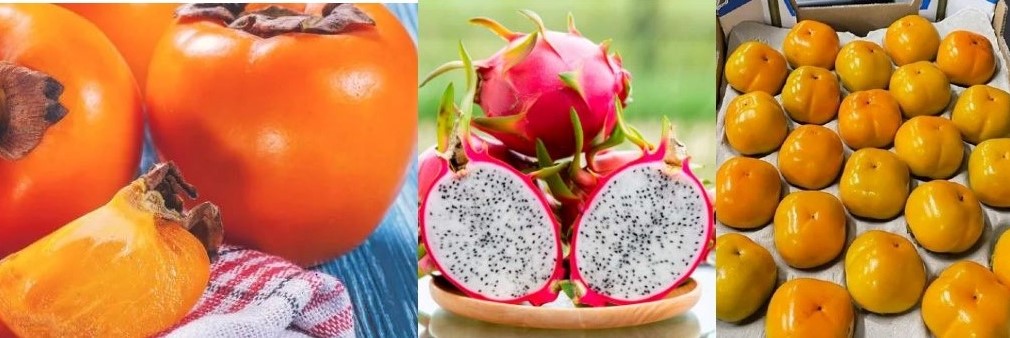With the high competition in the agriculture sector, some farmers are slowly adopting rare crops and are now experiencing a new wave of prosperity in fruit farming.
This is owing to the high demand these fruits have generated both locally and internationally. This article features some of the most profitable yet rare-to-find fruits in Kenya.
Dragon fruit
Dragon fruit, also called Pitaya is one of the rare yet profitable crops in Kenya. It comes in various varieties including the Hylocereus Undatus (pink-green scales), Hylocereus Costaricensis (pink), and the Hylocereus Megalanthus (yellow).
The pink-green scales variety is the most popular in Kenya and around the world markets and features a striking pink or red skin with prominent green scales.
Dragon fruit can either be sowed from seeds or cuttings. Planting from cuttings is the most preferred method as it is not time-consuming.
It will take 1 to one and a half years for a dragon fruit vine to produce the first fruit if it is planted from the cutting of a mature vine.
A vine propagated from seed, on the other hand, will take more than 6 years to mature. The lifespan of dragon fruit plants is over 40 years, and the plant can produce fruits more than twice a year.
The fruit is usually ready for harvesting when its skin color changes and the wings on the fruit start to wither. In addition, when the fruit is easy to pluck from the vine suggests ripeness.
You can keep dragon fruits for up to 18 days after harvesting without refrigeration. Under proper refrigeration, the fruit will remain fresh even for 3 months.
This fruit is not perishable since it stops ripening immediately after it is cut off from the mother plant.
According to experienced farmers, this exotic fruit can yield an average of 6500 kg per acre during the first two years of growth and assuming a plant population of 2400 plants.
As the tree progresses, the yield increases to 10,000 to 12,000 kg per acre. Each dragon fruit is normally around 300 – 1000 grams in weight.
The market price for dragon fruit ranges between Sh. 400 and Sh. 600 during the low and high seasons, respectively.
Moses Karimi: How I made Sh4.8m from garlic in 4 months
Jack fruit
Jackfruit, commonly known as ‘fenesi’ in Swahili, is one of the most popular fruits in the western parts of Kenya.
It is majorly grown in Busia, Kakamega, Bungoma, Kwale, Kilifi, and Vihiga counties. The fruit thrives in environments with warm temperatures and ample rainfall.
It requires minimal fertilizer and is resistant to most major pests and diseases. The plant takes up to three years to mature and can produce up to 300 fruits, with each fruit weighing between five and forty kilograms, depending on the size.
Compared to traditional crops, jackfruit offers a significantly higher return on investment, making it a lucrative option for farmers seeking to improve their livelihoods.
A single mature tree can produce upwards of 300 fruits in a year, with each fruit fetching a price between 400 and 650 Kenyan shillings. This translates to a potential annual income of 450,000 Shillings from just 10 trees.
Pepino melon
The pepino fruit resembles a melon in color, and its flavor recalls a succulent mixture of honeydew and cucumber.
The three main varieties of pepino melon grown in Kenya are golden pepino, Purple pepino, and Kiwi pepino.
They thrive in a variety of regions in Kenya, but the main production areas are the Central Highlands, the Rift Valley, and the Western Highlands.
The fruit has a fast growth rate and bears fruit within 4 to 6 months after planting. The best time to harvest pepino melons is during the cool season, from June to September.
Eldoret farmers, traders lose millions to agent who promised Canada visas, jobs
The main market for pepino melon in Kenya is domestic, and prices vary depending on the time of year, the quality of the fruit, and the market.
“You can calculate your total revenues assuming a yield of 12 tonnes per acre and a market price of Sh50 per kilo,” says Dedan Maina, a Pepino melon farmer.
Persimmon fruit
The demand for persimmon fruits is increasing both locally and internationally, making it a promising investment for farmers.
The fruit thrives in well-drained sandy or loamy soil with a pH range of 6.0 to 7.5. Proper soil preparation, irrigation, fertilization, pest, and disease control, and pruning are critical factors for successful persimmon farming in Kenya.
Persimmon trees can be propagated through seeds or grafting. However, grafting is the most preferred method since it ensures that the tree grows true to the desired variety.
The best time to plant persimmon trees is during the rainy season when the soil is moist.
According to Farmers Trend, the total cost of production per acre for persimmon farming in Kenya can range from Sh180,000- Sh350,000, depending on the specific inputs and labor costs.
Persimmon trees begin to produce fruit in the third or fourth year after planting, with full production being achieved by the fifth year.
A mature persimmon tree can produce around 400-1000 of fruit per year, depending on the variety. The fruit’s market price ranges between Sh80- Sh120 per piece.

